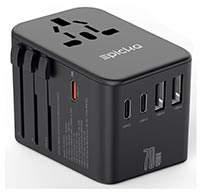Visit The Gorillas In Uganda And Rwanda
Tracking mountain gorillas in the Virungas is an unforgettable adventure. Period. There are roughly 1,000 of these magnificent creatures left in the wild—a conservation success story, actually, as numbers have been climbing over the past decade. But here's the thing: permits are extremely limited, and only three places on Earth let you observe them in their natural habitat.
When you lock eyes with a silverback, you realize something profound. You're among a tiny handful of people worldwide who'll ever experience this. To help you make the most of it, here are some practical tips and insights.
Where to Track Gorillas
You've got three options for a mountain gorilla safari. There's Virunga National Park in the Democratic Republic of Congo, Bwindi Impenetrable Forest in Uganda, and Volcanoes National Park in Rwanda. Most visitors choose Uganda or Rwanda due to the DRC's ongoing security concerns, though the situation there does fluctuate.
Fitness Requirements
Let's be honest—this isn't a casual stroll. You'll be hiking at altitude through dense vegetation on steep, muddy slopes. Some treks are easier than others, but you need to be reasonably fit. Porters are available for hire at the trailhead, and I strongly recommend using one. They'll carry your bag and help you navigate the toughest sections. The cost isn't included in your permit—budget around $30 as a tip. For families living near the park, porter work provides crucial income.
What to Expect on the Trek
Gorillas roam. A lot. They can cover several kilometers overnight, so trackers use their knowledge of gorilla behavior—plus intel from the previous day—to locate your group. This means trek times vary wildly. You might find them in under two hours. Or it could take eight or nine hours of hiking before you head back to camp. Once you reach the gorillas, you get exactly one hour with them. That's it. And it's magical.
What to Pack and Wear
Weather in the mountains is unpredictable, so prepare for rain. Wear lightweight hiking pants and a long-sleeved shirt, but bring waterproof layers too—a rain jacket, hat, and rain pants if you have them. Sturdy, waterproof hiking boots with good tread are essential. Bring an extra pair of socks in case you need to change them mid-trek. Pack everything in a small, waterproof daypack or backpack for your camera gear.
Gorilla Etiquette
Your guide will instruct the group to stay together while observing the gorillas. Why? The dominant silverback needs to see everyone at once so the family doesn't feel threatened or stressed. Keep your movements slow and deliberate. No sudden gestures or loud noises. Keep your voice low. Never stare directly into a gorilla's eyes—sustained eye contact is seen as aggressive, just as it would be with humans. Sometimes a silverback will charge or beat his chest. It's usually a display of dominance or a way to release tension, not actual aggression. Stay calm. Follow your guide's instructions. Always.
Credits
Photo by Jay Brand: https://www.pexels.com/photo/majestic-gorilla-in-lush-greenery-32181442/
By accepting you will be accessing a service provided by a third-party external to https://www.landed.at/






